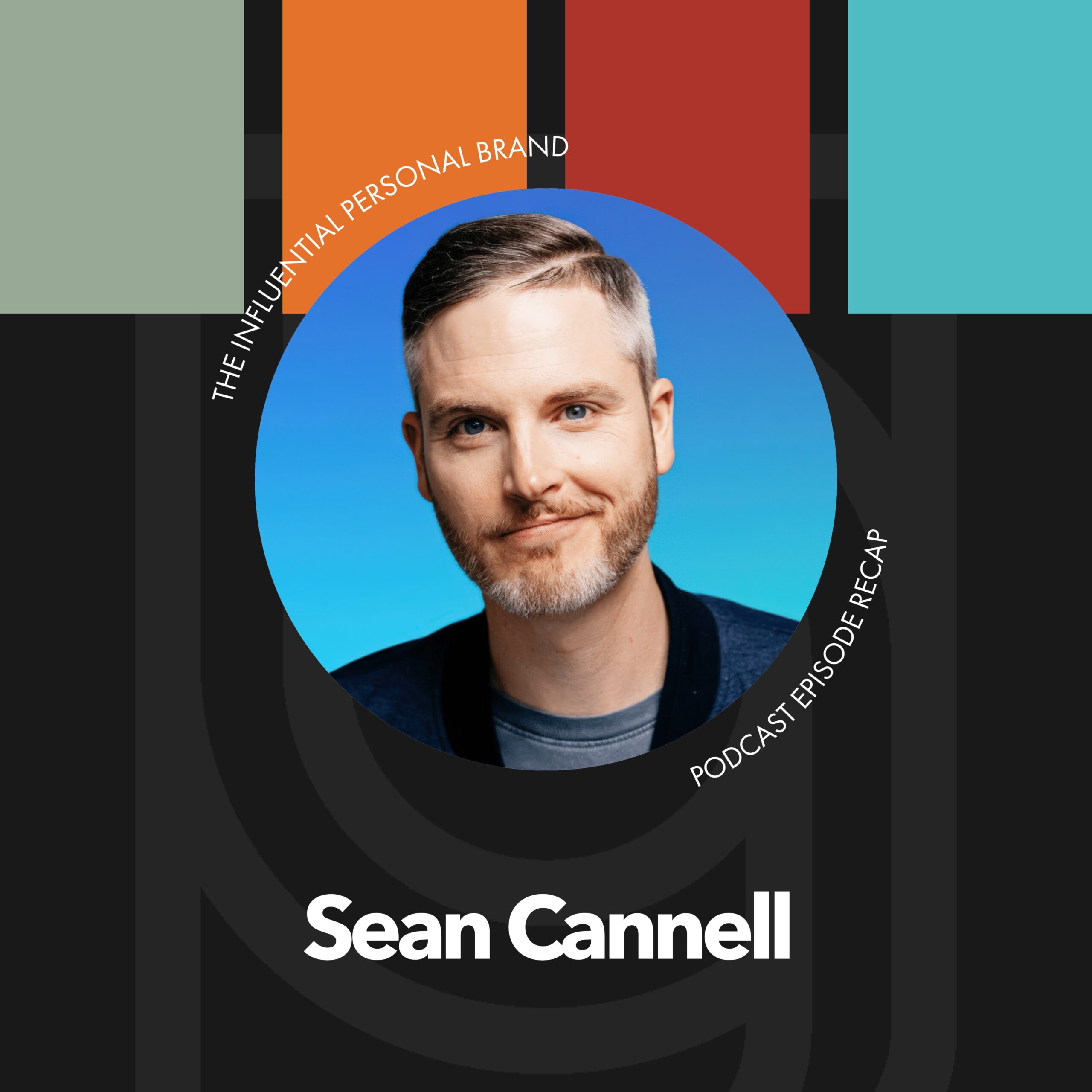RV (00:00):
RV (00:43):
What does it take to be a great coach? How do you coach somebody else to create peak performance? How do you actually help another person have a major breakthrough in their life? That’s what we’re gonna talk about today. I’m gonna share with you my little five step formula for helping somebody else have a massive breakthrough in their life. And this comes from the fact that I have coached hundreds of top producers, top performers, ultra performers, some of the most influential people in the world, right? If you look at some of my one-on-one clients, I have coached people who are like the number one realtor out of 76,000 agents. I’ve coached people to the world championship of public speaking. I’ve coached New York Times bestselling authors, I’ve coached billionaires and, you know, multiple billionaires and several hundred millionaires. I have coached some of, of the elite kind of performers and business professionals on the planet.
RV (01:45):
And one of the things that I’ve learned, and I think a part of why I often get hired by these, you know, elite business performers or people who want to become elite, is because I have really over the years, learned a lot about the psyche of what it takes to create a breakthrough for someone else. And that’s just what I wanna share with you. So it’s really simple. The first thing before I get into the five steps, what you first must know is that the reason why most people don’t have major breakthroughs in their life is not because of logical or technical limitations. It’s because of emotional and mental limitations. Let me say that again. Make sure you get it right. The reason that most people don’t have big breakthroughs in their life is not because of logical or technical limitations. It’s because of emotional and mental limitations.
RV (02:47):
Meaning, if, if somebody is going to become an, an ultra performer, right? That’s my term that we use and take the stairs or a multiplier to use a term from my second book, there is somebody who has an exponential change in their results, an exponential change in their outcome. It usually doesn’t happen from learning a tactic. It’s not that they go, oh, oh, there’s some hack that I just needed to learn, and now all of a sudden my, you know, my results are gonna explode. It’s because of an emotional or a mental breakthrough that must happen. And so I’m gonna walk you through this five step process. I’ve never created a piece of content like this before, so I’m so excited to be sharing this with you because as I, as I, you know, listened to the, the interview with Michael Bungay Stanier, and you know, such a great interview.
RV (03:39):
And he, he’s such a, such a successful guy in the book. His book sells really, really well. And I was thinking going, wow, I’ve never actually talked about what are some of the things that I try to do to help my coaching clients create breakthroughs. And of course, this is something I try to do with myself as I coach myself as well. So, how do you have, how do you help somebody have a huge mental or emotional breakthrough or pivot or change that allows them to have the big breakthrough in their life? So here’s this little five step process. So number one, the first step is you have to listen for their limiting beliefs. Listen for their limiting beliefs. So you know, part of what I loved about this conversation with, with MBS, Michael Bunge Stanier that we had, and part of what I love about coaching in general, right?
RV (04:32):
The premise of coaching is interesting in true coaching. The true coaching model is to believe that not the coach doesn’t have the answer that the, you know, the student has the answer. And it’s sort of like Socratic ma method based on Socrates, which is that a great coach is supposed to ask questions, and that the, the answer is revealed to the student by the student as you sort of ask questions. And part of me really loves that and agrees with that. Part of me also goes, my coaching style’s not that way. You know, I ask a lot of questions and I try to help people get to the answer quickly. And if they’re not getting it, I, I wanna like tell ’em what it is. You know, if, if we can, if we can see it, and if, if we are, if something is revealed through the conversation that points to the answer, not that we have all the answers or that I have all the answers, but that we can see what their answer is.
RV (05:25):
And this is what is so key about coaching, which I don’t think people understand. It’s not that we have a one size fits all answer that we can just go, oh, tell me your problems. I’ll give you the answer. It’s not out of our expertise necessarily. Although in our particular area of personal branding and personal brand strategy, we have a very, very, you know, robust set of curriculum and content. But even inside of that, it’s not that we have the right answer. It’s, it’s all about finding the right answer for the client at that specific moment. And the best way to do that is to listen for their limiting beliefs. So how do you listen for somebody’s limiting beliefs? It’s very simple. First of all, you gotta understand what a limiting belief is. And then I’ll, I’ll share with you some triggers for this, right?
RV (06:15):
So what a limiting belief is, is their quote unquote true story. I’ll call this a true story. It’s not actually true, but in their mind it’s true. You’re listening for their, their true story about why they can’t do something or why they aren’t succeeding, right? Like, somebody, somebody. And, and so now let’s, let’s talk about that, right? So if, if somebody is talking, let’s say you’re coaching them and they say, yeah, you know, gosh, I would, I would love, I’d love to get in better shape this year, but it’s just like, it’s just not possible with a toddler. There’s just no way that can happen. So right there is, is I go, I can, I have this like, mental trigger that goes, ah, that’s their limiting belief. They just spoke it out loud. And people do this all the time. If you listen, you’ll hear when someone you’re talking to says out loud, they won’t hear it.
RV (07:13):
But if you have a keen ear, you have to train your ear for this is, you’ll go, ah, they just spoke their limiting belief. How do I know that? Because they just spoke out something that they believe is true about why they can’t do something else, right? They’ll say, oh, well, I couldn’t do what that person did because blah, blah, blah, blah, blah. Oh, that’s a limiting belief. Or, you know, I’ve always been taught that you can never, you know, you can, you, you know, I’ll never be rich because I don’t believe in having debt. And, and everybody knows you need to, you need to take on debt to become rich. And it’s like, oh, so you’re listening for it, for you’re listening for their true story. It’s their rationalization, their justification, their explanation for why they can’t have something else. And that’s really key.
RV (08:04):
So you just gotta train your ear to listen for it, right? It’s their story. It’s something they believe to be true about why they can’t achieve something else. So that’s a huge, that’s like half of the battle right there is just being able to train your ear for it. Now, step two, in step two, I want you to call it out without singling them out. So what I mean by that is you want to, once you hear them say it, you wanna draw attention to it, but you don’t wanna make them feel stupid. You don’t wanna make them feel weak. You don’t wanna make them even feel wrong. So the the analogy that I think of for myself as a coach is I don’t wanna be a judge. I wanna be a mirror. I simply wanna hold up a mirror like a a, you know, a judge is determining right or wrong.
RV (09:03):
A judge isn’t a place of power. A judge is telling you you’re out of bounds. You know, you’re inbounds, you’re out of bounds. But a coach shouldn’t be a judge as much as they should just be a mirror to go, ah, let’s pause the conversation. Let me hold up, Amir, and I wanna reflect something back to you that I just heard. I just noticed that you said the reason you can’t do blank is because of blank. And so you just wanna reflect it back to them. And I want you as the coach to also encourage your client and for both of you to suspend whether or not that limiting belief is actually right. It might be true, right? It might be true that, you know, they, they literally go, oh my gosh, I’m involved in so many things. I just, I couldn’t, I couldn’t, you know, I can’t lose weight this year because I’m so busy.
RV (09:55):
‘Cause I have so many things. You know, that might be true, but it might not be true. It might be that they still watch 20, you know, three hours a night of Netflix, and that actually if they carved out 15 minutes from their Netflix routine, they actually could get in better shape. But you’re not in step two, your job isn’t to judge them. Your your job isn’t to render an opinion on whether or not this is right. Your job is to reflect it to them to call it out, but don’t s them out, right? Like singling them out is when you, you know, you, you kind of like embarrass somebody publicly. That’s not what you wanna do. You just wanna call it out to say, Hey, I just heard something interesting about what you said. The reason why you can’t blank is because of blank.
RV (10:39):
That’s a huge, huge important step. Now, number three, step three, step three is I want you to give them a new belief. Give them a new belief. So here again, you don’t necessarily need to tell them that what they believe is wrong, but I would use language like th this, I would say, Hey, I wanna invite you to consider a new way of thinking about this. And I just want you to try on, I love that language. I just want you to try on this idea for a second, try on for a second that it actually is possible to get wealthy without taking on debt. I just want you to try that on. It may or may not be true, but I just want you to try on that thought. I just want you to try on that mindset, I just want you to try on that belief, right?
RV (11:43):
That’s kind of like how you have to think about it is going, I notice you’re wearing an old outfit, and I just want you to try this on. You don’t have to buy it. You don’t have to own it. It doesn’t have to become your favorite thing. You don’t have to commit to wearing this, you know, out in public, but like right now, I just want you to try this on. And I want them to try on the idea to try on the, the the thought. So you want to give them a new belief. It’s basically like install a new operating system, give them a new way of thinking about a, a possibly a new way of thinking about, or just an alternate explanation of, or an alternate perspective for thinking about the thing that they currently think is true and set and defined in some other way, right?
RV (12:31):
So you’re gonna give them a new belief to try on. Then step number four, step number four is to fill them with encouragement. Fill them with encouragement. Here’s how you fill somebody with encouragement. And I’m gonna, I’m gonna take this to a biblical term. Now, you, you may not be a Christian, you may not be in the bli. The you may not believe in the Bible. By the way, if you don’t, I would really encourage you to check out my other, I have a podcast that I created called Eternal Life, seven steps, or excuse me. It’s called Eternal Life. Seven Questions. Every Intelligent Skeptic Should Ask About Jesus of Nazareth, where we look at the historical logical and academic accuracy and scrutiny of the Bible and the story of Jesus. You could check that out, but you know, you don’t have to be a Christian to, to appreciate, I think this concept, which is that the word inspire is actually a biblical term.
RV (13:32):
It means to breathe life into, and the, at least in the, the, the biblical account for the creation of, of humanity, of, of men and women, is that God s spoke the world into existence, and then he breathed life into, into man. So there’s this connection between word and life and breath, right? And so that’s where the, the word inspire comes from. It’s to use your words to breathe life into other beings or into things or into creation. That’s really a huge part of coaching. Again, even if you don’t believe in, you know, the Bible or whatever, hopefully you can, you know, grasp the power of that concept, that your words give life to people. They can give life to people. So how do you fill somebody with encouragement? What does it mean to actually encourage somebody? How do you use your words in a way that makes somebody feel inspired, that makes someone feel alive, that makes someone feel encouraged?
RV (14:36):
Well, it’s super simple. Tell them, like articulate to the person what it is about them that most impresses you. That’s how you inspire someone, articulate, you know, tell them what it is about them that most impresses you. You say, oh, I’m so impressed at how smart you are, or how sharp you are, or how fast, or how good you are at this, or, or how savvy you are at this, or your skills at doing this, or why I, the reason I love being around you is because of your energy, or because you’re funny, or, you know, because you always make me think differently. Or because you are you know, such a challenging you, you, you, you, you’re a critical thinker or whatever. That’s how you breathe life into people. And one of my favorite quotes is that Mark Twain said, each man is my superior in some way, or each woman is my superior in some way.
RV (15:34):
I really believe that. I really believe that all of us have something to learn from every other person. And so those are the things that I’m constantly looking for people. And when you want to breathe life into them, when you wanna fill them with encouragement, all you’re going to do is articulate what it is about that person that most impresses you, or what it is that you have learned from that person, or what it is about that person that inspires you. You inspire me to be a better parent. You inspire me to be, to read more. You inspire me to be a better leader. You inspire me to be better in excel. You inspire me to, to, you know, keep better track of my money. You inspire me to write more handwritten notes. You inspire me to be more spontaneous. You remind me to be more grateful.
RV (16:19):
Like whatever it is about the person, that’s what you articulate, and that’s how you fill somebody with encouragement. The reason that this step four is so important in helping somebody break through their limiting beliefs is that when you establish, when, when you’re helping somebody break a limiting belief, when, when you’re helping somebody break through this limiting belief, the neuroscience of this is that you’re forming a new neural pathway in their brain. Remember what I said about their, their limiting belief in step one? It’s their true story about why they can’t do something or why they aren’t succeeding. Why makes it true? What makes it true is not that it’s actually true. What makes it true is that they have told themselves that again and again, and again and again, and the human brain does not delineate between true and false, right or wrong. The, the human brain does not know right or wrong just by itself.
RV (17:18):
You have to teach it what’s right and wrong through programming. You have to teach it what is true and false through programming. So when somebody has a limiting belief, that’s an operating system that is running. Another metaphor that I sort of use for this is that imagine you’re going on a hike through the woods. Your neural pathways are like the path that’s been formed. The reason that path has been formed is ’cause you have walked that path several times. You have decided that that is true. You’ve reinforced it over and over again. So in your brain, literally there is a physical neural pathway that has been performed. And so it’s easier for your brain to think things that it has always thought, or it is easier for your brain to think things that it has already been thinking because the neural pathway has already formed.
RV (18:06):
When you get to step three in this, where you give them a new belief and you, you know, after you listen for the limiting belief, and then you call it out, and then you give them a new belief to try on. What you’re doing there is, is you’re trying to go off the path that they’re currently on, and you’re trying to form a new path. Literally, that’s what’s happening in the brain. A new neural pathway, a new set of synapses firing, you know, between like these neurons in your brain. And, you know, the illustration here is, think of it as you’re hacking through the forest and you’re, you know, you have like a machete and you’re like having to chop down trees. It’s harder to walk down a new path because the new path isn’t clear yet. The new path isn’t established yet, the new path, it’s also slower to walk down the new path.
RV (18:52):
It’s not as familiar and it’s not as cleared, right? So anytime you’re trying to create a new belief, a new mindset, a new pattern of thinking, it’s slower and it takes more time. That’s why you have to fill them with encouragement. You have to fill them with encouragement. And that gives them the encouragement is what keeps them going down the new pathway. And it’s, it’s saying, I, I believe in you. I know you’re smart enough to figure this out because you’ve inspired me to do blankety blank, right? I, you know, I, I, I know that you’re capable of doing this. And I, I know that you have, you are, you have all the characteristics of other people who have been successful in this journey. I know you have what it takes to do this. There’s evidence in your life that you have it because you impress me and you inspire me, and you want me, make me wanna be better, right?
RV (19:45):
So I’m filling them with that encouragement. And then step five, step five, and this will seem a little bit, counter to what I said earlier, give them what I call the 10% tactical. The 10% tactical. Now remember what I, I said at, at the very start of this, which I will hold true to, which is the reason most people don’t experience breakthroughs is not because of logical or technical issues. It’s because of emotional or mental, you know, limitations. But technical tips give people confidence. Technical tips, give people encouragement. Technical things make people feel like they have a new tool to try. And so that gives them sort of the you know, the, the willpower or the strength or the discipline or the motivation to actually take action and walk down the new neural pathway. So the 10% tactical is just saying, rather than giving them a whole bunch of things to focus on, give them the one thing, right?
RV (20:53):
So this is kinda like a 2080 rule, like the Pareto principle of, you know, focus on the 20% that creates 80% of the results, except it’s even more narrow than that, is I want you to give them the one tactical thing that they should focus on between now and, you know, your next encounter, your next meeting with them to go. If you just do this one thing, I believe that you will, this will create a 90% change in your results. One of the things that I think coaches do is they give people too many action items, too many things to do all at once, right? Give them the 10%, the 10% technical meaning, what’s the one technical thing that is a small, you know, tweak of their current behavior, only a 10% tweak of their current behavior that is likely to be responsible for a 90% change in their behavior.
RV (21:46):
You know, when, when I’m evaluating speakers, one of the things that you know we’re doing is, is I, I coach some of the best speakers, you know, in the world. And when I’m coaching very high profile speakers, it’s like, I don’t give them a hundred things to do. I try to give them like, you know, even in an hour long speech, I’m trying to give them two or three things. And really one big thing to go the next time you go out, I want you to focus on this one thing, because that’s the 10% tactical, the, the, the, the tiny little bit that they can focus on. But if they do that one thing, they’ll have a 90% change in their outcome or their results. So there you go. There you have it. This is my secret, never before shared formula on how to be a great coach and how to create breakthroughs in other people.
RV (22:32):
So step one is listen for limiting beliefs, right? Listen for their story about why they can’t do something. Step two, call them out without singling them out. Be a mirror, not a judge, but reflect back to them, Hey, I just heard you say the reason you can’t X is because of y. You’re reflecting it back to them. Step three, give them a new belief. Give them a new belief system. I just want you to try on for a second. What if you actually could do blank in order to get blank, right? And, and now open their mind up to actually, maybe there is a way to pull it off. Step four, fill them with encouragement. Tell them what it is about them that impresses you most. And then step five, focus on the 10% technical. Give them the one technical tip, the one technique change, the one skill thing, the one pragmatic or practical behavior change that you want them to focus on that will reinforce this new mindset.
RV (23:31):
If you do those five steps again and again and again, you will create breakthroughs in your clients like they’ve never experienced. And as your clients have breakthroughs, that’s gonna build your reputation. And as we know, reputation precedes revenue. That’s why we’re here at Brand Builders Group to help you turn your reputation into revenue. So if you haven’t yet requested a call with our team, I hope you consider doing that. So we could talk about helping you do that and generate more reput or generate more revenue from your reputation. You could do
[email protected] slash podcast. That’s all we got for this time around. We’ll catch you next time on the influential Personal Brand podcast.














